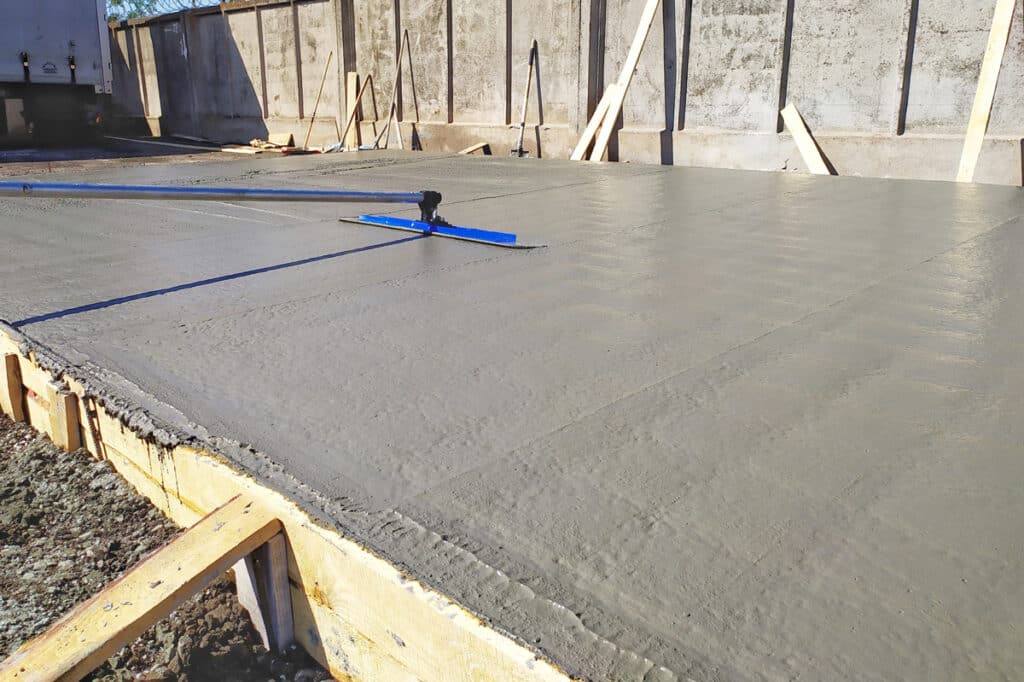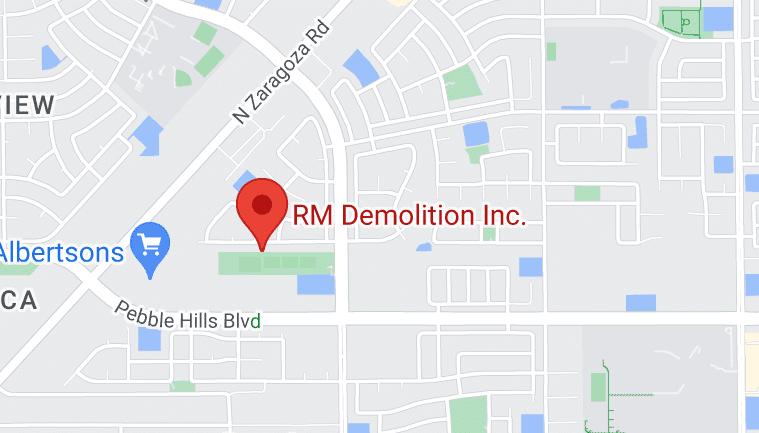Most people have heard of concrete slabs, but unless you’re involved in the construction industry, you probably don’t know much about them. If you’re thinking about building a home or business that’s going to use El Paso concrete slabs, it’s important to understand what they are and how they work.
Luckily, RM Demolition is here to help with all of your concrete needs. To learn more about our services and how they can benefit you, contact us online or call (915) 491-4184 today.
What is a Concrete Slab?
Concrete slabs are flat concrete surfaces that sit at ground level or just below. These slabs are often used as foundations for homes without basements or for patios and sidewalks.
In the case of a house or business building, construction workers will often dig down a few inches into the ground before pouring concrete slabs. They will then place boards or other barriers around the perimeter of where they’re going to pour the slab to contain the concrete.
Typically, concrete slabs are only used for single-level homes and buildings. The average slab for a home will be 4 to 6 inches, whereas larger business buildings and warehouses require much thicker slabs, sometimes up to 20 inches.
Different Types of Concrete Slabs
There are several different types of concrete slabs that you can choose depending on your needs.
- T-Shaped Footing Slabs
T-shaped footing foundation slabs are the most common types of concrete slabs. They are designed to handle incredible amounts of weight and pressure and are typically used as foundations for homes and buildings.
- Conventional Slabs
Conventional slabs in El Paso are supported by beams rather than lying directly on the ground. They are often used when concrete cannot be poured directly on the ground and instead requires the support of piers.
- Frost Protected Slabs
As the name implies, frost-protected concrete slabs have special protection against frost and freezing temperatures.
- Composite Slabs
Composite slabs are concrete slabs where the concrete is reinforced by steel beams and rods.
- Inclined Slabs
Inclined slabs are special types of concrete slabs used for roofs. As the name implies, these slabs have a slight incline and aren’t perfectly flat, so rain and snow can drain off of them.
What’s the Process for Pouring a Concrete Slab?
If you’re having a concrete slab poured for your home, business, or sidewalk and want to know what to expect from the process, here’s a quick rundown:
- Choose the right location for the slab.
- Dig down to remove the appropriate amount of topsoil.
- Ensure the ground is perfectly level.
- Use wood beams to build a frame around the perimeter of where the slab will be.
- Pour several inches of sand or gravel for the concrete to lie on top of.
- If necessary, lay the rebar on top of the sand or gravel.
- Mix and pour the concrete.
- Smooth out the concrete and ensure it’s perfectly level.
Get the Best Concrete Slabs in El Paso
If you’re looking for concrete slabs from licensed and experienced concrete professionals, RM Demolition is the team to contact. We’re a leading concrete contractor in the El Paso area and can serve all your concrete needs. Call (915) 491-4184 today.

